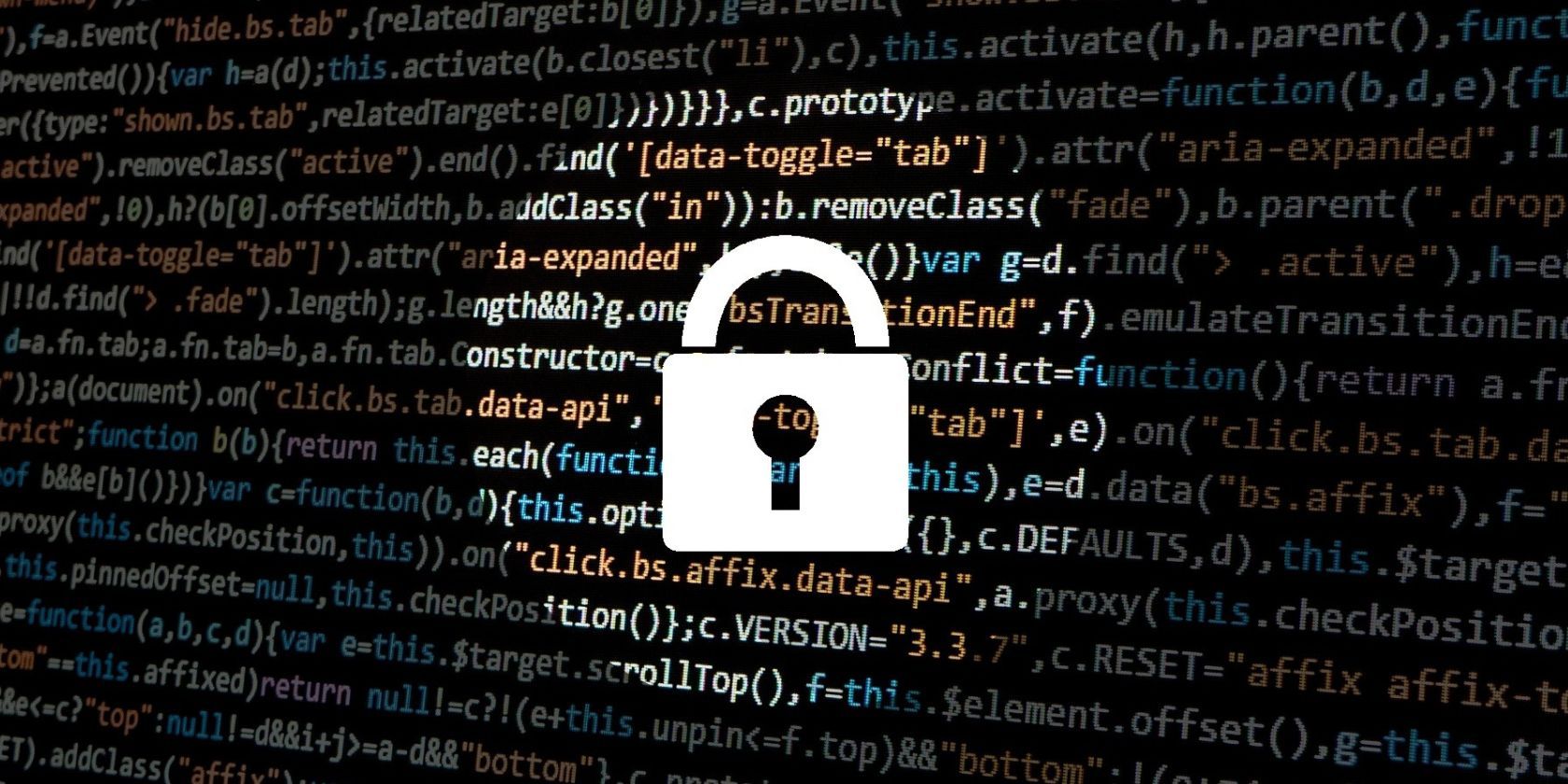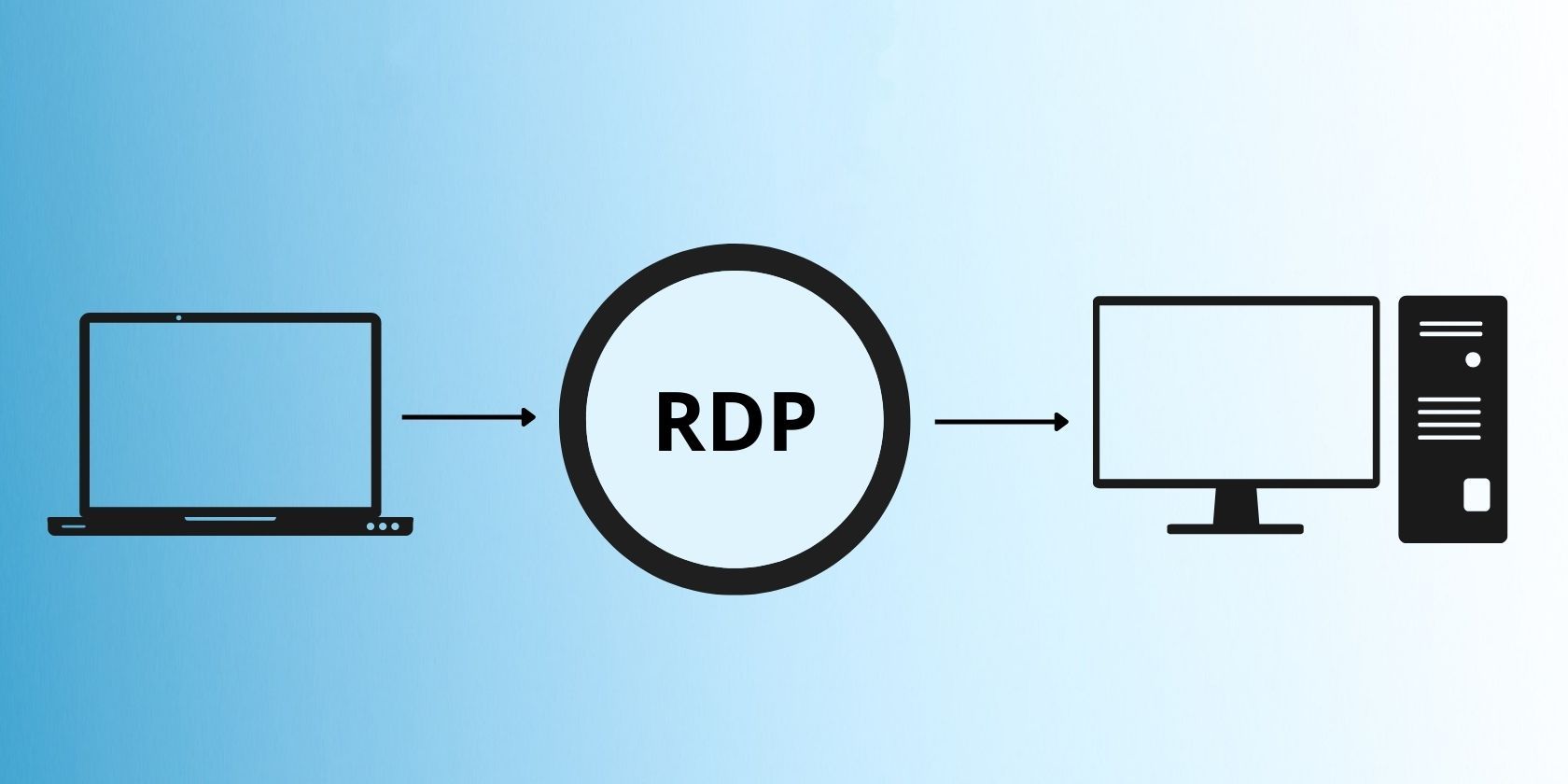Remote Desktop Protocol can be hugely useful, but this technology is not airtight in terms of security, and can, in fact, be hacked. So, how exactly do cybercriminals infiltrate Remote Desktop Protocol? And how can you keep yourself safe from such attacks?
What Is Remote Desktop Protocol (RDP)?
Remote Desktop Protocol (RDP) is a kind of software that allows individuals to use a given desktop from a remote location. There are various kinds of RDP software out there, such as ISL Online and Splashtop, but all share the same purpose of giving users the ability to view and control desktops without physically interacting with it. This is done using a separate PC or laptop.
Two elements are needed to use this technology: an RDP server; and an RDP client. The RDP server is whatever device you're trying to access, while the client is the device you'll use to access and control the targeted device.
While anyone can take advantage of Remote Desktop Protocol, it is most commonly used by employees when they are out of the office and cannot access their work devices directly. For example, during the COVID-19 pandemic, employees who were working from home could access their work computers using RDP software.
However, RDP is sometimes confused with cloud computing. While the two technologies do share some similarities, RDP allows you to literally control a device from afar, while cloud computing solely gives you remote access to files or applications.
Remote Desktop Protocol is an incredibly popular kind of technology, with millions of exposed RDP servers and millions of private servers in existence right now. This makes Remote Desktop Protocol a possible target for cybercriminals.
Why Is Remote Desktop Protocol Targeted by Hackers?
Because RDP can give one remote access to a device, the technology gives cybercriminals a lot to work with. After all, if an attacker can gain control over a device, highly sensitive data could become vulnerable, and harmful actions could be conducted through that device if it has access to certain accounts and software.
In a sense, the entire idea behind RDP is perfect for cybercriminals, as the majority conduct their attacks remotely and target specific devices when doing so. But how exactly are cybercriminals attacking Remote Desktop Protocol, and just how easily can it be infiltrated?
How Is Remote Desktop Protocol Hacked?
RDP attacks are usually known as data breaches, and are worryingly common. In such cases, Remote Desktop Protocol is used as an infiltration vehicle, making it easier for attackers to control a targeted device.
Remote Desktop Protocol is often exploited via unsecured networks. If an individual uses a vulnerable network to access an RDP server, a cybercriminal could more simply infiltrate the process and gain access to the server themselves. Older kinds of RDP software that haven't received security updates in a long time are also far more vulnerable to hacks.
On top of this, the dark web hosts entire marketplaces that sell RDP access to cybercriminals. Once an attacker infiltrates an RDP server, they can then sell access to the device on an illicit marketplace instead of controlling and exploiting the device themselves. This is a popular way through which malicious parties access devices via RDP.
The Results of Remote Desktop Protocol Hacks
After successfully accessing an RDP server, cybercriminals will often install malware onto the device in question.
Malware has a long list of uses, and can come in many different forms. In the case of RDP hacks, a type of malware known as ransomware is used. Ransomware encrypts a victim's computer files (making them inaccessible and unusable) so that the attacker can demand a ransom. The victim won't be given the decryption key until the ransom is met.
So, when an attacker installs ransomware on a device via Remote Desktop Protocol, an individual, group, or even an entire organization could have their important or sensitive data locked away until the attacker's requested payment is made. Sometimes, attackers don't even provide the decryption key after the ransom is paid. Ransomware attacks can be hugely consequential to an individual or organization, and can cause lasting damage.
But ransomware attacks aren't the only potential outcome of RDP infiltration. Cybercriminals can also make huge changes to one's device, carry out harmful actions, or overwrite backups on the targeted device via Remote Desktop Protocol.
While cybercriminals can exploit an RDP server's data themselves, they can also sell any private data they find on the dark web. The dark web has a hugely valuable illegal data sale market, with all kinds of information being up for grabs, including payment data, home addresses, social security numbers, and login information. So, if a device is accessed via RDP by an attacker, any data stored on that device could then be sold to other malicious parties.
So, if RDP hacks can be so damaging, is there any way that you can protect yourself?
How to Protect Yourself From Remote Desktop Protocol Hacks
If you use Remote Desktop Protocol and are worried about cyberattacks, there are a few things you can do to protect yourself from such a possibility.
The first thing you should do is ensure that your RDP software is totally up-to-date. While software updates can be frustrating and inconvenient, they are there for a reason. Updating your RDP software can lower your server's exposure to cybercriminals and therefore keep your data safe.
Secondly, you should always disable or deactivate your RDP software when no authorized party is using it. This narrows the window in which attackers can access devices via your RDP software. On top of this, you should ensure that only trusted parties have access to your RDP servers.
Limiting the number of third parties with access is also a solid option.
You can password-protect your RDP software too, and use two-factor authentication for access. This will provide some additional layers of protection and make it that much trickier to infiltrate. Again, ensuring that only truly trusted parties have the login information required to access your RDP software can also be hugely beneficial.
RDP Is Useful but Vulnerable
Like many other protocols out there, Remote Desktop Protocol is vulnerable to exploitation, and highly sensitive data can be stolen when malicious parties access devices via this technology. So it's important that you're doing what you can to boost your RDP software's security levels and protect your devices.




